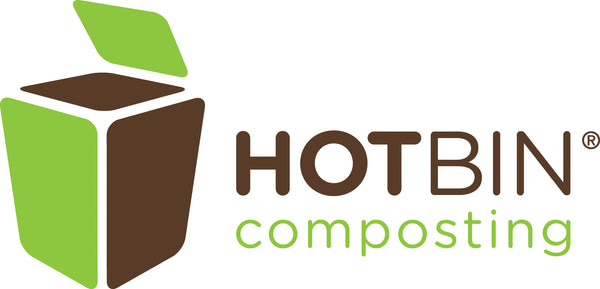Odors Coming from the HOTBIN
All composting produces some level of odor — it’s a natural part of the decomposition process. Whether you notice these smells depends on their concentration in the air, which varies with factors such as the amount and type of waste, the composting temperature (hot vs. cold), humidity, and even wind conditions.
The HOTBIN is a hot composter designed to minimize odors with a built-in carbon filter located in the lid. This filter captures and neutralizes most smells before they can escape.
What Should My Compost Smell Like?
The smell of compost changes depending on its age (fresh vs. mature) and whether it is composting aerobically (with oxygen) or anaerobically (without oxygen). Below are the main types of compost odors, their causes, and how to manage or prevent them.
The Four Main Composting Odors
1. Cabbage / Fruity Odor | Normal in All Composting
Explanation:
A light fruity or boiled cabbage-like smell is completely normal and indicates that your HOTBIN is working efficiently. This odor results from bacteria breaking down complex sugars and cellulose into smaller volatile compounds, collectively known as volatile organic compounds (VOCs).
At hot composting temperatures (around 104°F), VOCs form and vaporize quickly, escaping through the valve. The HOTBIN’s lid filter reduces these odors to below nuisance levels, though you may notice a brief whiff when opening the lid.
In contrast, cold composting produces VOCs more slowly, so odors are rarely noticeable.
2. Ammonia / Urine Odor | Too Much Nitrogen
Explanation:
This odor occurs when there’s excess nitrogen in the compost mix, often released as ammonia gas. You may notice it when composting large quantities of fresh grass clippings or other nitrogen-rich materials.
Tip: Mix in plenty of dry, carbon-rich materials such as shredded cardboard, office paper, or wood chips to balance the mix and reduce ammonia emissions.
3. Putrid / Rotten Odor | Lack of Oxygen
Explanation:
Rotten, sour, or “bad egg” smells indicate anaerobic conditions — a lack of oxygen inside the compost. This can produce unpleasant gases such as hydrogen sulfide, valeric acid, and acetic acid. Besides smelling terrible, these odors signal that your compost may be turning into a wet, slimy mess rather than healthy, crumbly compost.
Tip: Act quickly if you detect these odors. Add shredded cardboard or paper to absorb excess moisture and bulking agents (like wood chips) to improve airflow and restore aerobic conditions.
4. Musky / Earthy Odor | Compost Ready
Explanation:
A musky, soil-like smell is a sign of mature, finished compost. This is exactly what you want — it means your compost is stable, healthy, and ready to use in the garden.
Preventing Unwanted Odors
Unpleasant odors can attract flies, rodents, and other pests, as they signal the presence of decaying food. Here’s how to prevent and manage each type of smell:
|
Odor Type |
Cause |
Prevention Tips |
|
Cabbage / Fruity |
Normal byproduct of active composting |
Always present in small amounts. The HOTBIN’s built-in bio-filter keeps this odor below nuisance level. |
|
Ammonia / Urine |
Excess nitrogen (e.g., too much grass) |
Mix in dry, carbon-rich materials like shredded cardboard, paper, or bulking agent. |
|
Putrid / Rotten |
Anaerobic (lack of oxygen) |
Add shredded cardboard or paper to absorb moisture and wood chips to improve aeration before it turns anaerobic. |
|
Musky / Earthy |
Mature compost |
No action needed — this is the smell of success! |
Will Turning the Compost Remove Odors?
No — turning will temporarily increase odors as gases trapped inside the compost are released. Fortunately, the HOTBIN’s design minimizes the need for turning and includes built-in airflow and filtration to control smells effectively.
Ready to keep your compost smelling fresh? Discover how HOTBIN’s smart design makes hot composting clean, fast, and odor-free.
Click to learn more about HOTBIN and start composting today!

